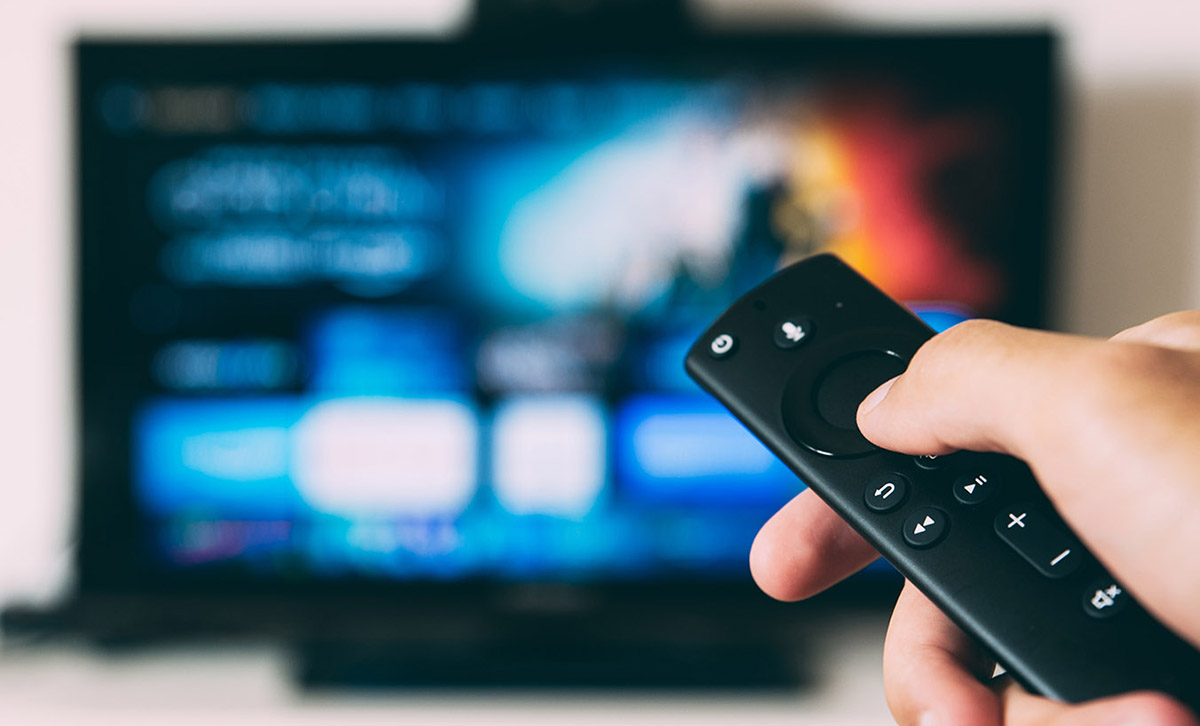Article by Natalie Kindle and Doug Povich, Department of Cable and Consumer Services
(Posted 2023 December)

 Black Friday sales, family holiday gatherings, and the Super Bowl often prompt people to purchase a new TV. If you haven’t bought one in the past ten years, you may not be ready for what you’ll find online or at your local electronics retailer. All TVs for sale today are so-called “smart” TVs, meaning they have built-in connections to the internet and can provide access to streaming services. The choice of TVs and how to use them can feel daunting. Here are some tips to help you hit the ground running (or more like sitting) in front of your new TV.
Black Friday sales, family holiday gatherings, and the Super Bowl often prompt people to purchase a new TV. If you haven’t bought one in the past ten years, you may not be ready for what you’ll find online or at your local electronics retailer. All TVs for sale today are so-called “smart” TVs, meaning they have built-in connections to the internet and can provide access to streaming services. The choice of TVs and how to use them can feel daunting. Here are some tips to help you hit the ground running (or more like sitting) in front of your new TV.
Buying Tips:
- Set a budget. Knowing how much you can afford to spend will quickly narrow your choices. The good news is that TV prices are constantly falling. You can expect to spend $300-$400 for a good 55” smart TV, the most popular size.
- Choose the right size. After price, size is the biggest factor in your decision. The right size depends on how far away you’ll be sitting. A good rule of thumb is to divide the distance from the TV (in inches) by 1.5. So, if you’ll be sitting 90” from the TV, you should have a 60” set.
- Focus on the important features.
- Screen type. Be prepared for jargon and lots of acronyms, but there are basically only two types of TVs on the market – LCD and OLED. Most sales are for LCD screens because they’re less expensive than OLED.
- Resolution. 4K (or Ultra HD) refers to the number of pixels that comprise the screen. It’s the standard these days.
- Color range. Look for “HDR” (High Dynamic Range), which delivers more colors, contrast levels and brightness to the screen.
- Refresh rate. This is how fast the picture is refreshed on the screen. Today’s standard is 120 Hz. Slower than that and fast-moving things can look blurry.
Tips for Operating Smart TVs:
Once you have your new TV, you’ll need to know how to use it. Here are some tips:
- Internet connection and security. Remember, your smart TV requires an internet connection. Your TV can connect via Wi-Fi or a wired connection. As with anything connected to the internet, be aware of possible security vulnerabilities.
- Setup. Most TVs walk you through the setup process the first time you turn them on. You may need to set up an account with the TV manufacturer to use the apps. Smart TVs monitor your viewing habits to give you programming recommendations and targeted ads. If you’re concerned about privacy, opt out of data collection during setup.
If you haven’t shopped for a TV recently, the choices can feel daunting. These tips should help you take the smart TV plunge, or at least ease your way into the water.
This article is part of the Golden Gazette monthly newsletter which covers a variety of topics and community news concerning older adults and caregivers in Fairfax County. Are you new to the Golden Gazette? Don’t miss out on future newsletters! Subscribe to get the electronic or free printed version mailed to you. Have a suggestion for a topic? Share it in an email or call 703-324-GOLD (4653).

